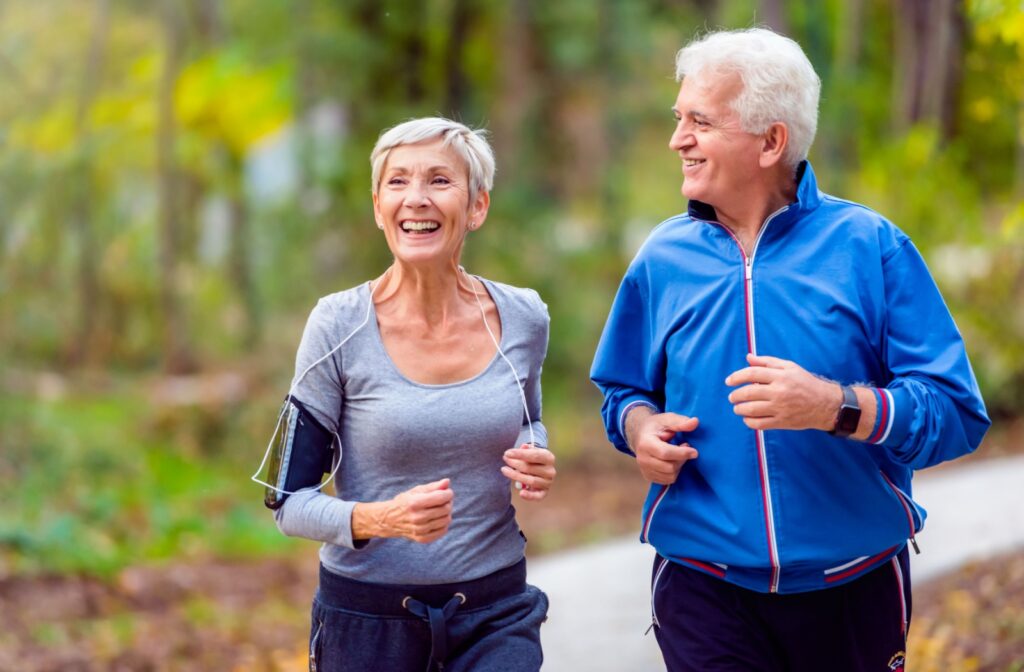As we age, it’s natural to slow down. Our bodies are not as limber as they used to be, and many older adults have age-related health conditions that can discourage them from being active.
One crucial component of a healthy lifestyle that’s often underestimated is regular physical activity. Older adults who are active can enjoy a better quality of life, including cognitive and mental health benefits. At Boulder Ponds Senior Living, there are on-site community amenities for everyone, including a fitness room with cardio equipment, weights, and space for movement.
As a general guideline, it’s recommended for older adults to get at least 30 minutes of physical activity per day to reap the physical and mental health benefits.
Let’s dive into why physical activity is crucial for older adults, including an understanding of the aging body, mental and cognitive health, and general guidelines for overcoming obstacles.
The Aging Body & Physical Activity
Aging is a natural part of life, and with it comes changes in the body’s composition, bone density, and muscle mass. Physical activity is instrumental in mitigating these changes and promoting a higher quality of life.
Regular exercise can help maintain joint flexibility, improve balance, improve mental health, and enhance overall strength, reducing the risk of falls and fractures.
Mental Health & Cognitive Function
Physical activity isn’t just about keeping the body in shape—it also has profound effects on mental health.
Studies consistently show that exercise can help prevent or manage conditions like depression and anxiety, which tend to be common in older adults. Another study discovered that cognitive deterioration is nearly twice as likely in inactive older adults than in active older adults.
Engaging in regular physical activity has been linked to improved cognitive function, potentially reducing the risk of neurodegenerative diseases like Alzheimer’s.
Importance of Physical Activity for Older Adults
Physical activity is beneficial for people of all ages, but it is especially crucial for older adults. Regular physical activity can lower the risk of chronic diseases and conditions, such as heart disease, stroke, diabetes, and arthritis.
Exercise also strengthens bones and muscles, which can help prevent falls and other injuries. Physical activity has been linked to better cognitive function and mental health as well. Staying active can also improve sleep, boost energy levels, and improve overall mood.
Guidelines for Older Adults
The World Health Organization (WHO) and various health organizations provide guidelines for physical activity tailored to older adults. The key recommendations outline how often seniors should practice aerobics, strength training, and balance exercises.
Aerobic Exercise
- Seniors should do at least 150 minutes of moderate-intensity aerobic activity or 75 minutes of vigorous-intensity aerobic activity per week.
- Activities can include things like brisk walking, swimming, cycling, or dancing.
Strength Training
- Incorporate muscle-strengthening activities on 2 or more days a week.
- Focus on major muscle groups, including the legs, hips, back, abdomen, chest, shoulders, and arms.
Balance & Flexibility
- Older adults should include activities that enhance balance and flexibility in their fitness routine, such as yoga or tai chi, or try flamingo stands and tightrope walking.
- These activities can extend a senior’s independence and are crucial for reducing the risk of falls, which can have severe consequences for older adults.
Consistency Is Key
- Spread physical activity throughout the week, aiming for regularity.
- It’s never too late to start—even small amounts of activity can yield significant health benefits.
Getting Started
Older adults should speak with their doctor before starting a new exercise program. It’s important to consider any medical conditions or physical limitations that may affect what kind of exercise can be done safely.
Once cleared, starting slowly and gradually increasing the intensity of exercise is essential to avoid injuries. Joining in on scheduled classes with Boulder Ponds Senior Living makes for a tailored workout for the personal needs of every resident, including offering support and motivation.
Overcoming Barriers
While the benefits of physical activity are clear, older adults may face various barriers, including health conditions, mobility issues, fear, or lack of motivation. Personalizing activities to individual abilities and preferences, consulting with healthcare professionals, and talking to others who might share the same feelings and challenges can help seniors overcome these barriers.

Aging Gracefully: Tailoring Physical Activity for Older Adults
Staying active is a vital part of our health, particularly as we age. Physical activity is not just a prescription for preventing diseases—it’s a recipe for a fuller, more vibrant life. By incorporating at least 30 minutes a day of aerobic exercise, strength training, and activities that enhance balance and flexibility, older adults can optimize their physical and mental well-being.
So, let’s embrace the power of movement and ensure that our golden years are not just lived but lived well. Boulder Ponds Senior Living is here to help—why not book a tour today?




